
Use an ATM to check account balances and withdraw money.
- Subject:
- Career & Work Exploration
- Practical & Applied Arts
- Material Type:
- Activity/Lab
- Lesson
- Provider:
- Goodwill Community Foundation, Inc.
- Provider Set:
- GCFLearnFree
- Date Added:
- 05/10/2018

This collection features resources to support teaching Financial Literacy to learners of all ages. We strongly encourage you to visit the Financial Literacy Hub for a variety of very useful curated collections curated by grade, outcome and module.
November is Financial Literacy month in Canada!

Use an ATM to check account balances and withdraw money.

Students will work through a budgeting workbook, choosing their expenses and overcoming unexpected items each month. Step 1, the student will use a dice to determine their future job, which will be used throughout the activity. Step 2 guides the students to calculate their take home pay using step by step guide to take off deductions from the paycheck. Step 3 allows the students to make life decisions for how they want to live and determine how much those decisions will costs (tracking the happiness points that go along with each choice). Step 4 is a fun part of the budget where "stuff happens" which impact their monthly finances and happiness points. There is a summary activity to find out if students are able to fund their monthly budget, even with the unexpected. There is a final reflection and analysis for the students to learn from this budget activity. Students will need this workbook, a dice (could be virtual), and a calculator

In this activity, students will explore a job as an Uber driver. There are some clear perks of working in the gig economy, such as being your own boss and working flexible hours. But it might not be as easy as it seems. You’re a full-time Uber driver with two kids to support and a $1000 mortgage payment due in a week. Can you earn enough to pay the bill -- and make more than other players?Students will keep track of their activities in the game, their choices (to pick shifts or spend money) and how they did during the game over (able to pay bills, balance life with a job that side hustle and varying hours).

This resource provides a listening guide, student assignment and reflection on the topic of "Delayed Gratification", 24 hour rule and self control. In this short talk from TED U, Joachim de Posada shares a landmark experiment on delayed gratification -- and how it can predict future success with this priceless video of kids trying their hardest not to eat the marshmallow. Mischel theorized that children who eat the marshmallow within the time period would not be as successful as children who waited for 15 minutes for another piece of marshmallow. Delayed gratification = the process that a person will gain a reward after resisting temptation.

Venture: Entrepreneurial ExpeditionIntroduce 7th - 10th grade students to the fundamentals of entrepreneurship, from creating a business plan to performing market research, in this food-truck simulation. In this program, students will progress through online (and offline) lessons entitled Building a Budget, The Entrepreneur in You, Planning & Building a Business, Your Business Snapshot.

This lesson seeks to help students to understand the concept of FOMO and the impact on their lives regarding anxiety, debt and stress. At the end of the lesson students should be able to identify: Causes of FOMO, Impact on debt and stress, Strategies to change this behavior. Included are pre and post lesson activities and assessments and content to teach the lesson and help students clarify the impact of FOMO on financial decisions. Suggested Timing: 75-150 minutes depending on whether optional topics are done and how much class time is given for assignment.

Outcome: FL10.5 Examine the role of personal budgets and their importance for financial planning.Indicator: f. Discuss how personal goals, social influences and values impact a budget.

This activity contains 21 pages of resources, handouts and activities about interest and goal assessments. The worksheets may help students organize information about career planning. Activities include: 7 Steps to Decision-Making, Self-Assessment & Work Values, Interests Assessment, Skills & Abilities Assessment, Personality/Temperament Assessment, Work Values Assessment, Choices not Chances Worksheet, Lifestyle Considerations, Goal Setting, Self Appraisal Questionnaire, Career Exploration, Interests Exploration, and a final Self-Exploration which is a compilation of all the data completed in the other worksheets.
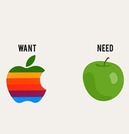
Students will explore the concepts of needs and wants and how they impact financial decisions. Discuss how budgeting decisions vary at different stages of life to reflect shifting personal goals. Students can work through some activites to discover reasons for budgeting, the difference between needs and wants and do their own self-evaluation for their financial choices.

This resource contains a full lesson with suggested sequences, timing, activities, context for learning, assignment and rubric. In this lesson, students will learn ways to avoid financial scams and schemes designed to defraud customers. At the end of this lesson, students will: identify ways to avoid financial scams and schemes designed to defraud customersSuggested Timing: 60 minutes depending on whether optional topics are done and how much class time is given for assignment.
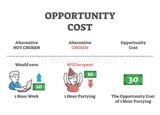
This activity involves four scenarios where the students will uncover the opportunity costs for each scenario (every decision involves a trade-off). The opportunity cost is the profit lost (or total cost- financial and non-financial costs) when one alternative is chosen over another. A trade-off is understanding that you are going to lose something, in relation to time, money, or energy, when the decision to choose something else is made. When you buy or do one thing with your money, you must give up the chance to buy or do something else. This is a trade-off: what you give up to get what you want. When you spend part of your income on certain things, you give up spending it on other things.

Objective: Students will understand the principles of saving money and why adopting a savings mindset is crucial for long-term financial well-being.Indicators: Investigate different saving strategies (e.g., lump sum or at regular intervals, pre-authorized and random contributions). Examine advantages and disadvantages associated with various saving strategies. Identify appropriate savings strategies based on needs, wants and goals (e.g., 50 per cent needs/30 per cent wants/20 per cent savings, auto withdrawal, deposit only account, deductions at source).

This activity includes a listening guide and assignments to guide the students through the video and learn abou the stock market"Explained | The Stock Market | FULL EPISODE | Netflix"

Outcome: FL10.5 Explain the principles of saving money and the importance of a savings mindset. Explore the concepts of needs and wants and how they impact financial decisions. Discuss how budgeting decisions vary at different stages of life to reflect shifting personal goals.
Students can explore a video and the Money and Youth textbook to look at various ways to make money and earn an income. There are many considerations for each type of employment.
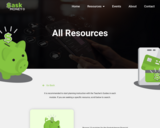
Folders upon folders of excellent financial literacy teaching materials!
"It is recommended to start planning instruction with the Teacher’s Guides in each module. If you are seeking a specific resource, scroll below to search."

Use the filters on the left hand side to find the content type, grade level and/or subject that you're after.
This site has many great lessons for Financial Literacy, Business, Math, Social Studies, Arts, ELA, Science and more!
Virtual programs are available!
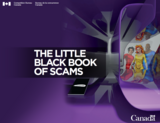
Scammers are sneaky and sly. They can target anyone, from youngsters to retirees. They can also target businesses. No one is immune to fraud. Our group of superheroes has found a way to see through the scams. Their secret is simple: knowledge is power! Read on to find out how you can also become a fraud-fighting superhero. Share this booklet with family and friends and start powering up! Students can become real-life superheros by arming themselves with the information they need to fight fraud and keep themselves, their family and their money safe. Each section includes a secon describing the fraud and valuable "Tips to protect yourself".

This booklet contains 7 chapters on topics related to how to earn, save, budget, spend, borrow, protect and give money. Whether you get a weekly allowance or get paid for walking your neighbor’s dog, your first step in handling your money well is to think about short-term and long-term goals. Then make a plan to reach them. It takes a bit of practice to master your money, just like it takes time to learn to ride a bike. But once you get the hang of it, you’ll be ready to tackle all sorts of money twists and turns.
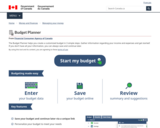
"The Budget Planner helps you create a customized budget in 3 simple steps. Gather information regarding your income and expenses and get started! If you don’t have all your information, you can always save and continue later.
This tool allows Canadians to create a personalized budget that they can save and update online. It draws on behavioural research into how people make financial decisions, and uses tips, guidelines and suggestions to make budgeting easier. "
Watch this video to get started: https://www.youtube.com/watch?v=eidft2ovmQc&feature=youtu.be (copy and paste this url into your browser).